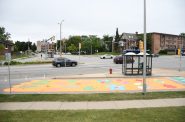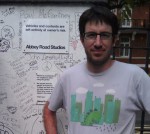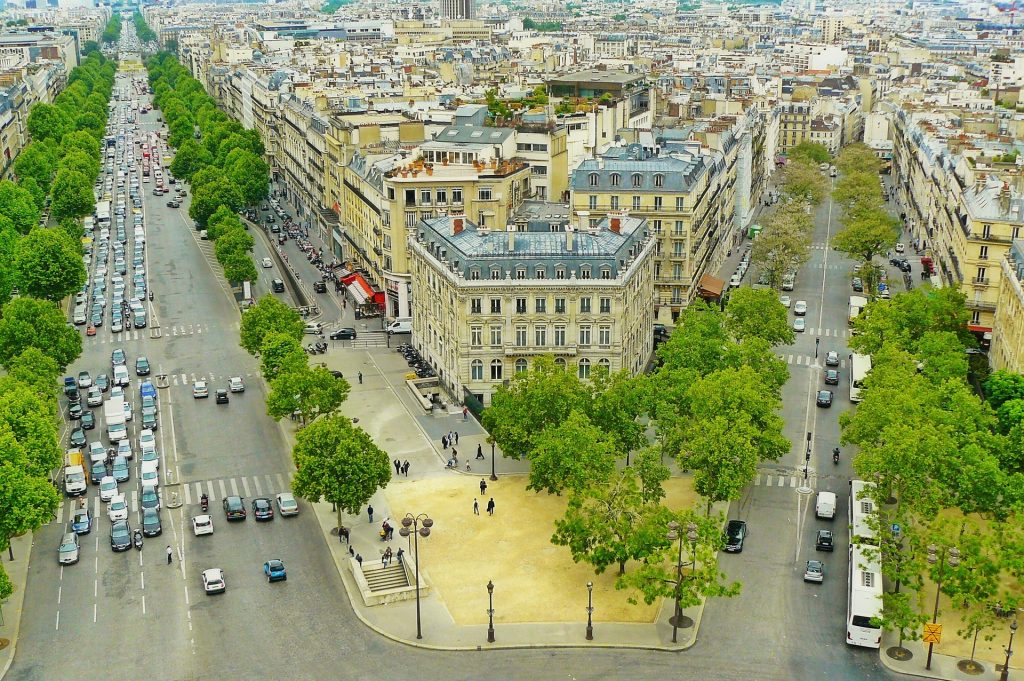Paris Aims to Cool the Extreme Heat
All the city news you can use.
Every day at The Overhead Wire we sort through over 1,500 news items about cities and share the best ones with our email list. At the end of the week, we take some of the most popular stories and share them with Urban Milwaukee readers. They are national (or international) links, sometimes entertaining and sometimes absurd, but hopefully useful.
City livability rankings tell a biased story: The Bangladeshi capital of Dhaka has a population of 23 million people that ebb and flow from rural to urban spaces to work and live. The migrations tell a story of a place that’s different than the one told by international magazines through annual livability rankings. Rickshaw garages spread about the city tell this story of accommodation and work and the ability to live in both rural and urban worlds. (Shreyashi Dasgupta and Annemiek Prins | The Conversation)
Hurricane displacement of middle class: After Hurricane Ian wiped out coastal communities in Florida, many of the middle class retirees and homeowners that lived there couldn’t afford to fix their homes so they left and sold their land. Now, communities are changing as the only people that can afford to live there have money. Rising construction costs, rising and hard to acquire insurance as well as the risk of future disasters are likely to mean more change is coming. (Zack Colman | Politico)
Paris aims to cool down in extreme heat: During a 2003 summer heat wave in Paris France, 15,000 people died, stuck in top floor apartments under the zinc roofs that are well known in Paris but also trap heat. Now the city is looking for ways to cool itself to avoid more painful heat wave impacts as the climate changes. Retrofitted roof top gardens, tree planting programs, and redesigned streets for active transportation and cooler surfaces. (Jeff Goodell | Yale e360)
Amsterdam’s controversy: Amsterdam is trying to reduce over-tourism and has come up with several ideas on how to do it. One of them is moving much of the famous red light district to the suburbs. But like many discussions these days, it brings into focus conflicts about what gives a place its character and who deserves to be heard when big decisions are made. People wonder if the city has changed, while others believe it must be protected from its more famous self. (Charlotte McDonald-Gibson | Time Magazine)
Quote of the Week
In the dogged persistence of Chicago’s crosstown trucking—and, indeed, in the history of 47th Street Yard itself—lies a story of American railroading’s ambivalence. Neither a fully integrated network nor a series of independent, competing companies, the industry’s history has been shaped by its leaders’ changing approaches to cooperation within their fragmented reality.
–Uday Schultz on his blog Home Signal discussing how disconnected freight in Chicago leads to big national climate and transportation problems.
This week on the podcast, we’re joined by Hussein Mahfouz of Transport for Cairo and Adham Kalila of Streetlight Data to talk about their new report created for NUMO, “All Possible Commutes: How Micromobility and Realistic Car Travel Times Impact Accessibility Analysis.”
Want more links to read? Visit The Overhead Wire and signup.
Urban Reads
-
Congestion Pricing Cuts Air Pollution in New York City
 Dec 14th, 2025 by Jeff Wood
Dec 14th, 2025 by Jeff Wood
-
We Think We Love to Drive. But Do We Really?
 Dec 7th, 2025 by Jeff Wood
Dec 7th, 2025 by Jeff Wood
-
Can Scott Wiener Tackle America’s Housing Crisis?
 Nov 23rd, 2025 by Jeff Wood
Nov 23rd, 2025 by Jeff Wood



















